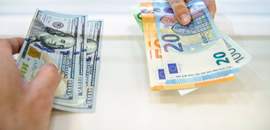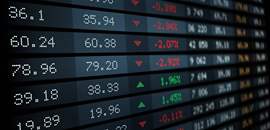President Biden has tried to deflect this by citing the Inflation Reduction Act of 2022 as a way to address the problem. This legislation is popular with the Democratic base because it contains measures to lower drug prices and authorizes nearly $400 billion in spending to address climate change. Yet, it is unlikely to sway most voters for a simple reason: the effects will not be evident for a long time and inflation currently stands at a four-decade high. How should voters assess Biden’s responsibility for inflation?
The public should understand that the main causes of inflation today are due to overly accommodative monetary and fiscal policies, and supply shortages in the wake of the COVID-19 pandemic. While the president is accountable for setting fiscal policy, he can influence monetary policy only indirectly by appointing the governors of the Federal Reserve System, including the chair.
Since 1914 (the year in which the Federal Reserve was established), the most common way presidents have tried to influence monetary policy is by jawboning the Fed to refrain from raising interest rates in election years. The most blatant attempts were by Presidents Lyndon Johnson and Richard Nixon in the period from the mid-1960s to the early 1970s, when inflation accelerated markedly. By comparison, President Reagan did not interfere with
Fed policy in the early 1980s even though interest rates soared to record highs during Paul Volcker’s tenure as chair.
During the period of disinflation that ensued since the early 1990s, most U.S. presidents have allowed the Fed to act independently. The outlier was President Donald Trump, who called the Fed members “boneheads” in 2019 for not lowering interest rates below zero as the European Central Bank did. “It is only the naïveté of Jay Powell and the Federal Reserve that doesn’t allow us to do what other countries are already doing,” he said.
By comparison, Biden has taken a hands-off stance in dealing with the Fed. When Biden reappointed Powell as Fed chair last November, I wrote that he should privately signal to the Fed that it would be okay to raise rates with inflation emerging as a problem. However, it is hard to criticize him, considering no other U.S. president did this.
The main area where Biden has faced criticism relates to outsized government spending. The $2 trillion American Rescue Plan, in particular, has come under scrutiny by economists for contributing to the surge in inflation.
As reported by David J. Lynch of The Washington Post, several economic studies conclude that as much as 3-4 percentage points of the recent increase in inflation is attributable to the legislation. However, determining the plan’s impact on inflation is difficult to measure precisely because it hard to separate the effects of monetary policy and supply chain disruptions. Consequently, some studies show much smaller effects of the relief package on inflation.
Why is the U.S. Electorate Quick to Blame Biden for Inflation, but Not Give Him Credit for the Economic Recovery and Low Unemployment?
By comparison, there is general agreement that the package speeded the recovery and contributed to record low unemployment. This raises another issue: namely, why is the U.S. electorate quick to blame Biden for inflation but not give him credit for the economic recovery and low unemployment?
The challenge President Biden faces is that the index currently stands at about 12 percent due to high inflation. It could climb further if the economy were to slip into recession and boost unemployment. Meanwhile, the big unknown is how much further interest rates will have to climb to bring inflation down closer to the Fed’s 2 percent average annual target. If Biden seeks reelection in 2024, he will need to answer a key question on voters’ minds — namely, are you better off today than you were four years ago? Biden will likely maintain that he acted boldly in boosting government spending during the pandemic because the response to the GFC produced an anemic recovery.
However, the current situation is a very different type of shock. Because the financial system was not impaired by the pandemic, there was a quick recovery. When combined with the energy squeeze by Russia, the result is that fiscal and monetary policies have had a much greater impact on inflation today. This also means policymakers now have less latitude to combat an economic downturn.
A version of this article was posted to TheHill.com on October 21, 2022.























